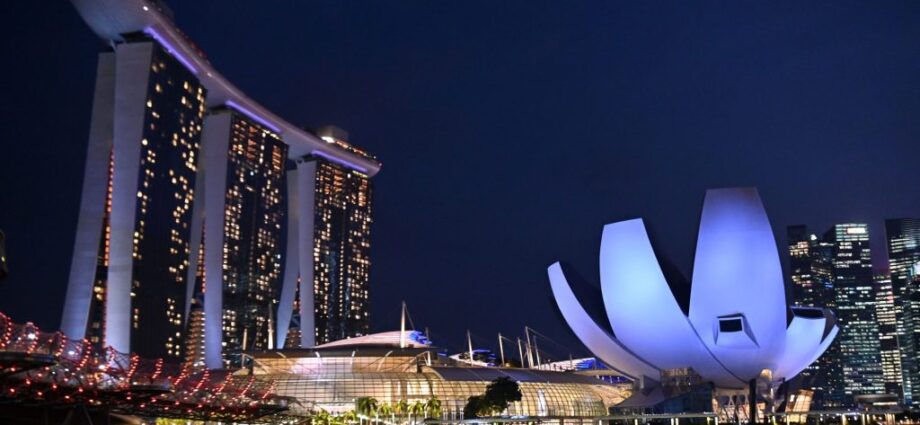The arrival of a major international art fair, with blue-chip exhibitors tapped to participate, typically means that a locale’s art market has reached a certain inflection point. What dealers think about the new art fair says a lot about their expectations, how the art market is changing, and where collectors are located.
ARTnews spoke with several art dealers ahead of and at ART SG in Singapore, the world’s newest fair, this week about why they chose to attend (or not), their thoughts on the Asia-Pacific market, and how they think this fair compares to ones elsewhere in Asia.
Distinct from Hong Kong
Though Fabio Rossi, co-owner of Rossi & Rossi in Hong Kong and London, didn’t head to Singapore—expenses and fair fatigue were factors—he told ARTnews that ART SG would benefit from current interest in the Southeast Asia market and a strong lineup of galleries, adding that it would provide an international art fair for a very different community of collectors than Art Basel Hong Kong, the region’s established fair, does.
“First, competition is good in any case, because it pushes you to be better,” Rossi, who is also the co-president of the Hong Kong Art Gallery Association, said. “I think there is space for competing and complementary fairs and events in the region. Some will be bigger, some will be smaller, but there is a space for it.”
Several dealers cited the track record of ART SG cofounder Magnus Renfrew as one of the biggest reasons why they were attending, as well as recent activity in the region by galleries and auction houses as encouraging signs of Singapore’s status as a rising market. They cautioned, though, that ART SG should be seen in addition to, rather than as a competitor of, other Asian art fairs, like Art Basel Hong Kong and Frieze Seoul, which launched last September.
“The evidence is that we’re adding art centers, not trading them,” Pace Gallery CEO Marc Glimcher said. “I ascribe to the additive theory of the art world, rather than the zero-sum equation theory.”
Lehmann Maupin’s new Singapore-based director Ken Tan echoed this sentiment: “It’s never an either/or, divide-and-conquer kind of strategy with the rest of Asia.”
Careful Calculations
Ahead of the fair, dealers said they expected a mix of attendees, primarily from Singapore and other Southeast Asian countries, like Vietnam, Malaysia, Thailand, and Indonesia, with collectors from Australia, China, Taiwan, South Korea, and Japan sprinkled in. (Some cited the opening of China’s borders earlier this week as a big reason why many Chinese collectors made the last-minute decision to visit.) The fair seemed to live up its promise in that regard.
Leo Xu, David Zwirner’s senior director in Hong Kong, characterized the first day of ART SG as an “incredible, unparalleled experience” that included meeting with multiple generations of collectors from different areas in the region. Xu said the most important thing for ART SG’s success would not be the attendance of the international collectors, but the long-term development of the local collecting community.
After having exhibited at Art Basel Hong Kong for five years, New York’s P.P.O.W. decided to try out Singapore instead, eager to meet its existing clients in the region and make new connections. Wendy Olsoff, the gallery’s cofounder, said that though there has been speculation about Singapore’s ascendency, there was still a level of uncertainty on opening day. “I think dealers are gamblers, but we can afford to gamble this,” she said.
To help manage financial risk, Olsoff brought only two staff members with her and said she plans to sell all the work on view to Asia-based collectors and institutions. “We’re trying to be aware of our carbon footprint so I don’t want to bring work to Singapore and then ship it back to America,” she said.
Different Approaches to Collecting
A trend Xu observed in his meetings with collectors was that it was young generation who had an understanding of contemporary art. Many of these young collectors’ parents may have collected antiquities and Buddhist sculptures in the past. Now, they found a new collecting area.
“The parents are the ones inspired by the children’s tastes and buying following that,” Xu said. “Those are incredible new customers who discover contemporary art through art fairs, and they have much more wealth compared to their children.”
While several VIPs wore haute couture, high-end watches, and rare, six-figure handbags, that didn’t necessarily translate into early sales for high-priced artworks, which were few and far between at ART SG.
But Emi Eu, director of Singapore-based gallery STPI, said a recession wasn’t the reason why the very expensive artworks were not shown or placed on the first day. “Here, people are just not used to spending that kind of dollars on art,” she said. “There are very few people who will spend that kind of money. It takes time to bring them into that kind of territory. Art is a luxury item, but it’s consumed in a different way. It’s a boundary or border that we need to help them to cross.”



